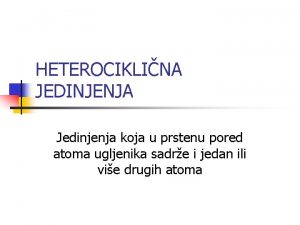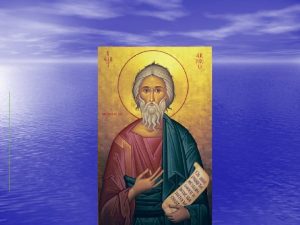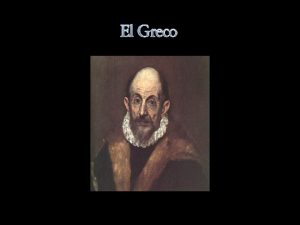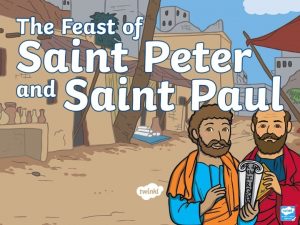The Story of St Piran Cornwalls Saint Who












- Slides: 12

The Story of St. Piran Cornwall’s Saint

Who was St. Piran? St. Piran is known as the merriest holy man Cornwall ever knew. He is also the patron saint of tin miners, and a special day used to be kept as a holiday in St. Agnes and St. Day, and others where tin mining was always the main type of work for people.

St. Piran and the story of the swamp! Piran was an Irishman, so legend goes; when still a young man he rose to favour as priest and counsellor to King Aengus of Munster. Aengus had seven people who played harp for him, all of them could sing sweetly and play like angels, but one dark winter’s day they were all drowned in a storm whilst crossing a treacherous bog; all that was left was their harps, which Aengus hung on the trees beside the swamp so that the winds played sad tunes on them.

St. Piran and the story of the swamp! But Piran worked a great miracle! He prayed for three days and nights without stopping, and brought back to life those harp players, though they had lain in the mud and ooze of the bog for more than a month!

King Aengus and St. Piran For several years Piran advised King Aengus and heard him confess his sins; then the King grew tired of his wife, Queen Aisnin. Piran saw it was his duty to make sure that King Aengus continued to be kind to his wife and not leave her on her own.

King Aengus and St. Piran But the King would not listen to Piran’s warnings; so the holy man gathered people together and told them about the King’s behaviour. At this Aengus became so angered against Piran that he condemned him to be tied to a millstone and thrown off the highest cliff in Munster.

St. Piran on the millstone On a cold winter’s day the deed was done: the saint was bound to the heavy granite stone and thrown over. But all the watchers were astounded to see, when the stone hit the sea far below, that Piran was not tied up anymore and the stone itself actually floated!

St Piran arrives in Cornwall The millstone sailed with Piran on it far away from Ireland, amid the waves and storms of the Celtic Sea; Piran had no control over the floating stone, but when at last the voyage was over and it rolled ashore on the north coast of Cornwall, he realised what God was planning for him to do.

St. Piran’s Oratory So he began again, teaching the Cornish people all about God. Until Piran arrived, Cornish people worshipped their own Celtic gods of the sun and rain, and followed their Druids. He worked to build himself a little church, which to this day still exists near Perranporth: St. Piran’s Oratory, or praying-place, the oldest Christian church in all Britain.

St. Piran saves the day again! Piran loved a good story, and unlike many saints who lived only on bread and water, he enjoyed a good feast with the best wine; he always joined in the celebrations of his flock, whether it was a wedding, a parish holiday, a wrestling tournament or a funeral wake. One story told of him is that a rough local chieftain stole a young nun from a convent which Piran had care of, and wanted to keep her to marry her. But she was bound by her vows to the convent; the nuns were very distressed to lose their sister and St. Piran had to try to get her back. He managed it, but only by performing another miracle: the chief would not let her go, he said, unless he were woken up the next morning by a cuckoo calling. It was November time, cold and dreary and cuckoos are never around in November; but Piran prayed all night, and the next morning, sure enough, a cuckoo appeared on the barn roof of the chief’s house and called loud enough to wake the dead. So the nun was returned!

St. Piran and the Tinners Piran was very popular among his people, and he became even more so after discovering how to smelt tin. It happens through heating tin to make it very hot indeed to make the metal flow out of it in a liquid. One frosty night he built in his seashore cave a larger fire than usual: and as he was sitting before it praying, a big black rock he had brought home for a hearth-stone suddenly began to melt down in the great heat, and soon a stream of silver metal ran out from it. He called the people round to see it; and it seemed to them another miracle, to see the bright metal coming from the black ore. Soon the miners of the parishes round about where digging and smelting tin, and selling it to merchants from all over Europe.

The Story of St. Piran So Piran became the Tinner’s Saint, and that is why the flag of Cornwall is known as the Cross of St. Piran: a white cross on a black background, symbolising the light of God in a dark world, and also the white tin metal against the black rock.























